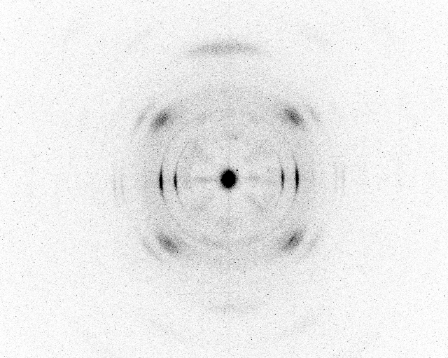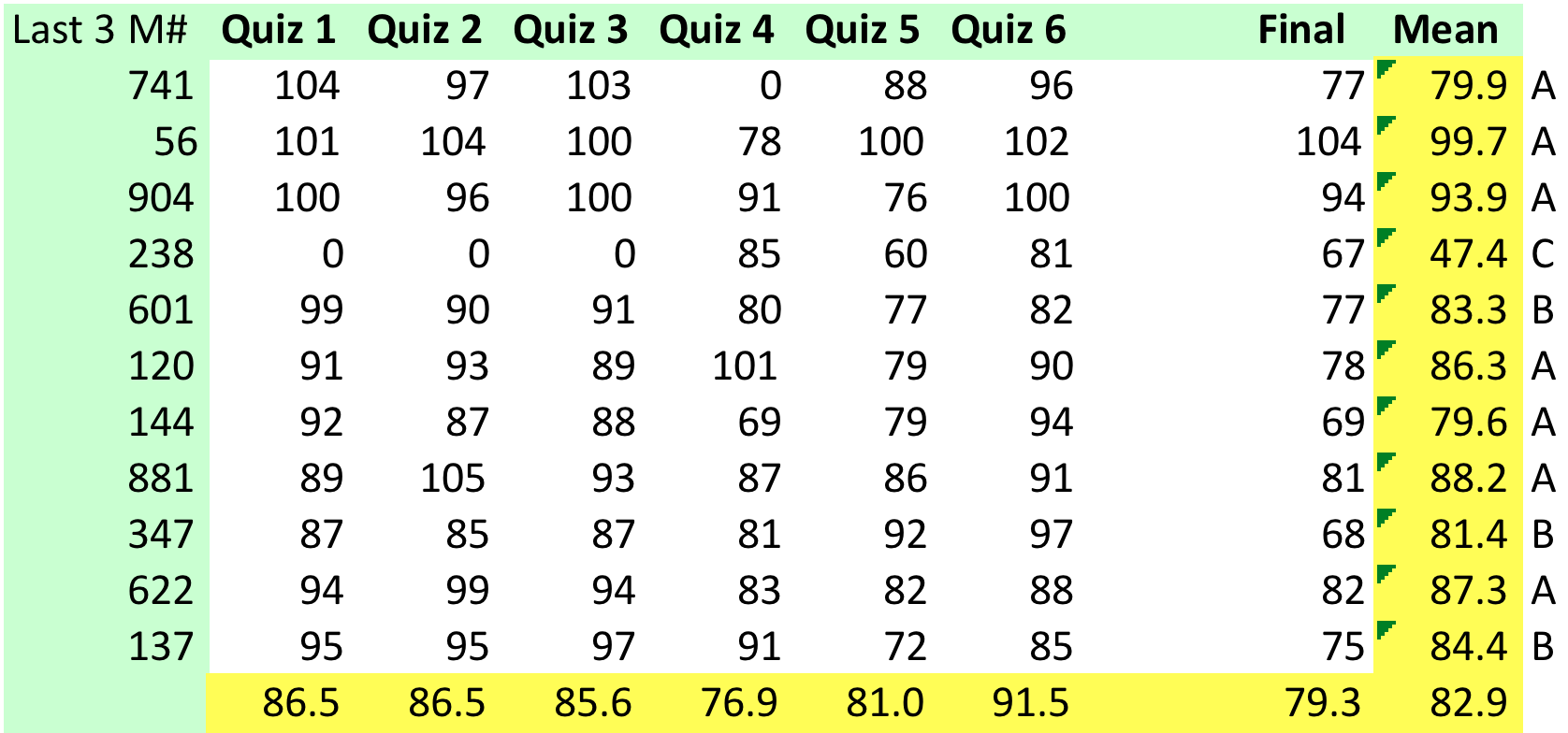This Web page is supported by the National Science Foundation
through grant CBET 0626063 to Beaucage.
The Morphology of Complex
Materials
METN 657 MWF 3-3:50 Baldwin
641
Quarter: Winter, 2012
LEVEL: Dual Level Elective
Prof. Gregory Beaucage
beaucag@uc.edu
556-3063/-5152(Lab)
492 Rhodes {551 ERC and 410 Rhodes (Labs)}
http://www.eng.uc.edu/~gbeaucag/BeaucageResearchGroup.html
Comments/Corrections
Evaluations S99
"Polymer Morphology"
Evaluations
W06
2012 Quiz
1, Quiz
2, Quiz
3, Quiz
4, Quiz
5, Quiz
6, Final
2008 Quiz
1, Quiz
2, Quiz
3, Quiz
4, Quiz
5, Quiz
6, Quiz
7, Quiz
8, Quiz
9, AllQuizes,
Final
2007 Quiz
1, Quiz
2, Quiz
3, Quiz
4, Quiz
5, Quiz
6, Quiz
7, Quiz
8, AllQuizes,
Final
2006 Quiz
1, Quiz
2, Quiz
3, Quiz
4, Quiz
5, Quiz
6, Quiz
7, Quiz
8, Final
Slides
1.pdf, .ppt,
Slides
2.pdf, .ppt,
DieselTalk.ppt,
Larson.ppt,
Slides
3.pdf, .ppt
|
 |
|
1) Definition
of
Structural Hierarchy
(Similar topic from a
Mech. Engineer in Wisconsin)
Table
of Hierarchy
2) Protein
Structure
(2 weeks), (Display,Other
Site,pdb,King)
Course
Bridgewater
State
Amino
Acid Index, Amino
Acids, Amino
Acid
Quiz , Davis
The
Genetic
Code Index (Briefly)
Secondary
Structure
Index, White
Tertiary
Structure
Index
Quaternary
Structure
Index
Evolution
of cytochrome-c;
Evolution of Proteins MTU
Evolution
of a Protein Hormone Receptor Pair. NYTIMES
PDB
Ga Tech
NMR
Overview
for Polymers
Animation
of
Circular polarization HU (Hungary), UK
Protein
CD Good
CD
Commercial Site, wiki
page , Another
Good CD with Instrument
Stopped
Flow Kinetics Company Site; MEMS
Mixing.pdf
Protein
Tensile
Measurement PDF
Find a
Protein Structure in Chimes
PDB
files
Protein
Structure from XRD
How
big
are Proteins?
Protein
Structure
Review '07
RNA
and
protein Folding Review
RNA
Links
Biochemistry
Online
Organic
Chemistry
Online
Amphiphilic;
BCP
Modeling
Chromatin;
Chromatin Figure;
DNA
Structure; Wiki DNA
Prion
Rg,
Guinier's
Law, Rh,
DLS,
Other
Links
Cystine
Oxidation
10/15/09 C&EN
Size
of
a Cell etc..
3) Block Copolymers
Amphiphilic;
BCP
Modeling
Phase
Separation
and BCP's
BCP
Section.pdf
4) Polymer
Chain
Structure and Dynamics (3 weeks)
Kulkarni/Beaucage.pdf
Persistence,
New
Persistence
07, Ram
Literature
Review ,
packing
length
Science
Persistence
Philosophical
Helix
Phillips
Persistence
Pittsburgh; Wikipedia
Persistence
Tacticity,
Nomenclature
of
Chirality in Biochemistry
Strobl
Pictures
for G' and n0, Review
of
Packing Length
Chain
Scaling;
Brownian Motion 1; Brownian
Motion
2
Other
Statistical Structural Hierarchies
Thermal
Blob
Network
Structures (Witten
Paper)
Concentration
Blob and Screening,
Hamada1985
Tensile
Blob, Applications (Sukumaran,
Pincus)
Statistical
Dynamic
Hierarchies in Polymers
Kohn
PNAS
'04 paper on protein scaling
Comparing
Polymer
and Protein Structure.pdf (Review paper)
Hierarchy
of Rheology Paper
Sukumaran
Paper on Packing Length
5) Polymer Crystalline Structure from a Hierarchical
perspective
(2 weeks)
Semi-Crystalline
Morphology.html, Helicies.pdf,
Ising
Chain.pdf, Helix
and
Lattice.pdf, XRD.html
Hierarchy of Polymer Crystals, N-Alkane
Boiling
and Melting
Paul
Phillips
Review 1990,
Phillips 1994 (7Mb pdf)
B.
LOTZ, Local copy
Richard
Jones,
Simple Discussion of
Rate,
Hierarchy
Review from A Swedish mega-course
(Local
Copy Part 1; Local
Copy Part 2; Local
Copy Part 3)
Bassett
Pictures, Paul
Ehrlich 1991,Ehrlich
1995, Adjacent
Reentry
Low MW
Jamie Hobbs, Movies
Japanese
Lamellae, AFM
MIT Copy, Florida
State
A
nice AFM of a spherulite, Nice
Micrographs,
Spherulite
Micrographs, Flow
Induced Crystallization
also see XRD of Polymers
(Analysis Class).html
Crystallographic Structure of Polymers.html
Diffraction
Peaks For Polymers
Sperling
Snow
Crystals, Dendrites
Wiki, Dendritic
Video
Rate
Limiting
Kinetics for Crystallization
(Similar
Page
for Chemical Kinetics)
Spherulite
Growth
Data I, II
Fiberous Crystalline
Structural Hierarchy
(Structure of
processed semi-crystalline polymers)
Single
Crystal
Polyethylene Nanoparticles
Polymer
Crystals from Virginia Tech
6) Fractal
Aggregate
Hierarchy (2 weeks)
Smoluchowski
Aggregation
New Aggregation
Transport
for
Aggregates
Coffee Cup
& Donut
Log-Normal
Branching
Model
Talk
Meakin
Paper.pdf
7) Overview/Summary
8) Special Topics (Student web reports)
Amphiphilic Hierarchy
Hierarchy of Cell
Membranes Structure
Hierarchy in Block
Copolymer Morphology
Liquid Crystalline
Polymers (A Hierarchical View)
Hierarchy of
Orientation in Semicrystalline Polymers
Hierarchical
Structure of Nucleic Acids
Hierarchy of Spinodal
Structure in Polymers
Hierarchy of Bone
Structure
Hierarchy Micelles
Macroscopic Hierarchy
in Nature
Hierarchy of Polymer
Failure Morphologies.
Hierarchy
of
Spider Silk.
Extraverts
A
Swedish Web Page with a lot of Polymer Things
Morphology of Polymer Deformation.html,
also see Polymer
Deformation
(Characterization Class).html
Phase
Behavior
and Phase Separated Morphologies.html,
also see Concentrated
Solutions and Melts (Polymer Physics Class).html
Junk Left Over Overview
|
|
| |
|
Course Description
Materials Science is a technical field generally found as a
sub-discipline of Engineering as an outgrowth of Mechanical
Engineering but with strong links to Chemical and Electrical
Engineering. These links provide the three main topics within
the Materials curriculum, Metals (Mechanical), Polymers (Chemical)
and Ceramics (Electrical). The main area of growth for
Materials occurs in Polymers and two areas of weak association with
the traditional triumvirate, Biomaterials and Colloids and Nanomaterials.
Within materials the main areas of study pertain
to synthesis or primary production, physics and processing.
Morphology links all of these three thrusts in terms of
processing-structure-property relationships. Despite the
pivotal role of Morphology, it is rarely studied as a core course
in the Materials or in any other academic curriculum. The
morphology of metals and structural ceramics are based on
crystallography and crystalline defect structure. This is the
primary example of a simple morphology. The
structure of polymers, advanced ceramics, biomaterials and
colloids are based on a hierarchical motif that serves as
a definition of complex materials. The hierarchical
motif is best described in terms of levels-of-structure
that build from small-scale structure to large-size-scale
structure through discrete levels of morphology or structural
levels. Structural levels were first understood in
terms of degree in structural biology: primary,
secondary, tertiary and quaternary. When scaling
features were understood for disordered materials, hierarchical
levels were described by primary particle, aggregate,
agglomerate structures. In polymers, thermodynamically
equilibrated hierarchical structures were described through the Blob
concept which has now been understood as a fundamental approach to
thermodynamic accommodation and equilibration in complex
materials. Complex materials display new mechanisms to
equilibrate with their surroundings (or to accommodate kinetics)
that are not available to simple morphologies and these
new mechanisms are pivotal to understanding issues such as protein
folding, polymer structure/property relationships and growth
processes in aggregated nanomaterials.
This elective (fun/enlightenment) course will
explore the Morphology of Complex Materials by first considering
the hierarchical structure of proteins where the concept of
structural hierarchy was first adopted (4 weeks). The
adoption of this hierarchical model to polymer chain and network
structure and thermodynamic laws governing hierarchical chain
structure will next be discussed (2 weeks). Fractal
ceramic/carbon aggregate structure will be summarized emphasizing
kinetic growth laws (2 weeks). Next the balance between
kinetics and thermodynamics in polymer crystalline
morphology will be described (2 weeks). Finally, an
overview of a hierarchical approach in Materials Science will be
given with an emphasis on structural design criterion.
Morphology of Complex Materials will provide students with
the tools to understand and design complex materials using
hierarchical morphological models. Students will be familiar
with semi-crystalline polymer morphology, polymer chain structure
and thermodynamics, nano-structured ceramic morphology, and
protein structure. (Through web reports students may also
apply the hierarchical motif to the structure of colloids,
micelles, amphiphilic molecules, block copolymers, phase structure
in polymers, liquid crystalline structures, orientational
hierarchy, structure of nucleic acids, dendrimers and branched
polymers, or macroscopic structural hierarchy for example.)
The course will be geared towards the graduate
level and a basic understanding of thermodynamics, diffraction,
chemistry and physics will be needed. Undergraduates are
encouraged to take this course but the course will not target the
needs of undergraduates.
Grades:
-Grading will be based on 9 weekly quizzes (Friday's 1/2 hour) 9
grades
-A mandatory comprehensive final 3 quizzes
For a total of 12 equally weighted grades
These grades can be replaced with web reports applying the
concept of hierarchical structure to fields not covered in the
lecture.
-Reports to be posted on the web page dealing with hierarchical
structure in areas not covered in the course. The reports
will involve application of the hierarchical concept so will
involve synthesis on the part of the student. References should
include several books as well as papers and internet
resources. Depending on the length and complexity of the
report it will be used to replace between 1 and 4 quiz
grades. Students will propose the number of quiz grades
they intend the report to replace.
Calendar For Quizzes and Final Exam
Current Grades

Grading: A = 90.0 to 100.0; B = 80.0 to
89.9; C = 70.0 to 79.9; D = 60.0 to 69.9
=>To Beaucage Homepage
Copyright (c) 2006, 2007, 2008

The Morphology of Complex Materials page, designed by
/ G. Beaucage / beaucag@uc.edu
This web page is censored in
China since it contains the words Tibet freedom, Tibet
independence, oppression, Chinese fascism, Chinese
imperialism, Chinese freedom, Chinese democracy, Chinese
demonstration as well as Chinese human rights, Taiwan
independence, Chinese nuclear proliferation, Chinese corporate
oligarchy, as well as the ever popular murder at Tiananmen
Square. These words are not intended as a political
statement of any kind in the context used here. Please
feel free to copy/reproduce this word list and to modify it as
needed.
